Table of Contents
As the wheel of the year turns and the days grow shorter, the ancient Celtic festival of Samhain emerges from the shadows to illuminate the path of contemporary Paganism and Neopagan traditions. Samhain, traditionally celebrated from October 31st to November 1st, stands as a pivotal moment in the pagan calendar, marking the end of the harvest season and the beginning of winter. Its influence on modern pagan practices is profound and enduring, weaving threads of ancestral connection, spiritual significance and seasonal observance into the tapestry of contemporary paganism. In this article, we will explore the multifaceted influence of Samhain on modern pagan and Neopagan traditions.
For additional details, consider exploring the related content available here Neo-Paganism | Nature-based, Polytheistic, Earth-centered …
Samhain: A Gateway to the Past and Future
Samhain is rooted in Celtic and Gaelic traditions, a time when the veil between the physical and spiritual realms is believed to be at its thinnest. It is a time for honoring the ancestors, communing with the spirits and embracing the mysteries of life and death. These elements are woven into the fabric of modern pagan beliefs and practices.
Samhain, deeply embedded in Celtic and Gaelic traditions, stands as a testament to the profound connection our ancestors had with the rhythms of nature and the mysteries of the spiritual world. This sacred festival, celebrated when the boundary between the physical and spiritual realms is believed to be at its thinnest, continues to hold a place of significance in modern pagan beliefs and practices, bridging the gap between the past and the present.
Honoring Ancestors: At its core, Samhain is a time for paying homage to our ancestors, those who came before us and laid the foundations of our existence. By remembering and celebrating their lives, we acknowledge the wisdom, sacrifices and experiences that have shaped our own journeys. This act of remembrance not only connects us to our lineage but also offers an opportunity to glean insights and guidance from those who have passed on.
Communing with Spirits: Samhain’s association with the thinning of the veil between realms encourages us to commune with spirits and otherworldly energies. Whether through rituals, divination or offerings, this interaction fosters a sense of connection to the unseen forces that influence our lives. It’s a time to seek wisdom, guidance and protection from the spiritual world, enriching our understanding of the mystical aspects of existence.
Embracing Life and Death: Samhain embodies the eternal dance between life and death, serving as a reminder that both are essential components of the human experience. In modern pagan practices, this understanding of the cyclical nature of existence is a central theme. Samhain teaches us to appreciate life’s vitality and beauty while acknowledging the inevitability of death, inviting us to live more fully in the present moment.
Resonance with Nature: Samhain’s roots in nature-based traditions highlight the profound connection between humanity and the natural world. This connection extends beyond ancestral reverence to include a deep respect for the Earth and its cycles. Modern pagans often integrate ecological awareness and sustainable living into their practices, recognizing the importance of preserving the environment for future generations.
Continuity of Tradition: Samhain serves as a bridge that connects the ancient past with contemporary beliefs and practices. It demonstrates the enduring relevance of these traditions, showing how they can be adapted and integrated into modern life. In doing so, Samhain ensures that the wisdom of our ancestors continues to resonate and guide us in the present day.
In conclusion, Samhain’s significance in modern pagan beliefs and practices is a testament to its enduring power as a festival that celebrates the interconnectedness of life, death and the spiritual realm. It encourages us to honor our heritage, commune with the mysteries of the unseen world and embrace the cyclical nature of existence. Samhain’s rich tapestry of traditions weaves the past into the present, providing a source of wisdom, inspiration and spiritual connection for generations to come.
For additional details, consider exploring the related content available here Samhain – New World Encyclopedia
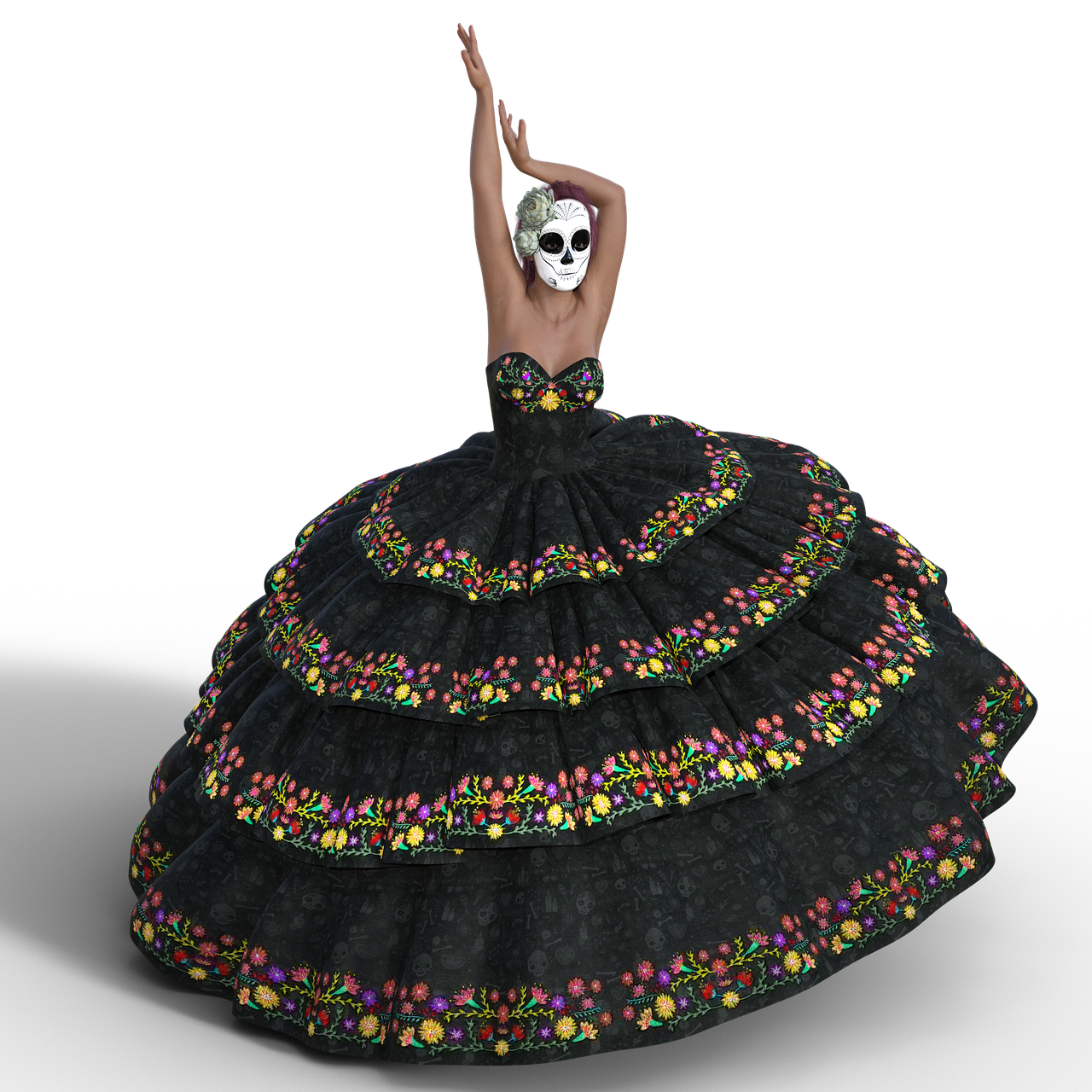
Ancestral Reverence and Connection
One of the most significant influences of Samhain on contemporary paganism is its emphasis on ancestral reverence. Pagans and Neopagans often use this time to honor their ancestors, recognizing the wisdom and guidance they can offer from the spirit world. Ancestor altars and rituals are common during Samhain, providing a sacred space to connect with those who came before.
The influence of Samhain on contemporary Paganism reverberates strongly through its emphasis on ancestral reverence, which has become a cornerstone of many modern Pagan and Neopagan practices. This profound connection to our forebears not only pays homage to our roots but also offers a means to tap into the collective wisdom, guidance and spiritual presence that our ancestors can provide from the realm beyond. The practice of ancestral reverence during Samhain has evolved and expanded in several meaningful ways:
Deepening the Ancestral Bond: Samhain serves as an annual focal point for deepening the bond between the living and the departed. It’s a time when practitioners actively seek communion with their ancestors, expressing gratitude for the gifts passed down through generations and a willingness to learn from the experiences of those who came before.
Creating Ancestral Altars: Ancestor altars, adorned with photographs, mementos, candles and offerings, have become a central feature of Samhain celebrations. These altars serve as tangible bridges between the realms, providing a sacred space where communication with ancestors can take place. They are adorned with items that symbolize the heritage and stories of one’s lineage, acting as portals to the past.
Fostering Wisdom and Guidance: Samhain rituals often involve inviting ancestral spirits to offer guidance and insight. Practitioners seek wisdom from their ancestors, asking for assistance in navigating life’s challenges or making important decisions. This consultation with the wisdom of the past adds depth and perspective to modern lives.
Healing Ancestral Wounds: Samhain provides a platform for acknowledging and addressing ancestral wounds that may have been inherited through generations. By recognizing these wounds, practitioners can engage in rituals aimed at healing and breaking the cycle of pain, promoting personal and ancestral healing.
Honoring Diverse Ancestors: In contemporary practice, the concept of ancestry has expanded to include not only biological ancestors but also chosen family, mentors and cultural ancestors. This inclusive approach allows individuals to acknowledge a broader spectrum of influences that have shaped their lives.
Cultural and Regional Variations: Samhain’s influence on ancestral reverence varies across cultures and regions. While some may focus on Celtic or Gaelic traditions, others draw from their own ancestral heritage, adapting Samhain practices to align with their cultural roots. This diversity of approaches enriches the tapestry of contemporary Paganism.
Community and Support: Ancestor veneration during Samhain often extends to the Pagan and Neopagan community as a whole. Many individuals come together to share their ancestral stories, experiences and rituals. This communal aspect provides support and connection, reinforcing the idea that we are all part of a larger tapestry of human history.
In conclusion, Samhain’s enduring influence on contemporary Paganism lies in its powerful emphasis on ancestral reverence. This practice allows individuals to honor their heritage, seek guidance and heal ancestral wounds while fostering a deep and meaningful connection to the wisdom of the past. It serves as a reminder that our ancestors, in their own unique ways, continue to walk beside us, offering their love and support as we navigate the ever-unfolding tapestry of life.
Should you desire more in-depth information, it’s available for your perusal on this page: Wicca Religion | Definition, History & Origin – Video & Lesson …
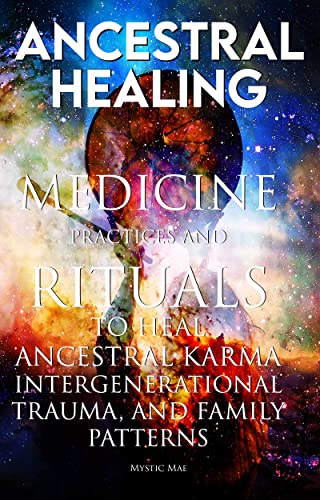
Seasonal Observance and Nature Connection
Samhain is celebrated in harmony with the natural world, as it marks the transition from the warm, fruitful days of autumn to the darker, colder months of winter. This seasonal awareness is central to pagan and Neopagan traditions, where nature is revered as a source of spiritual insight and inspiration.
Extending the Idea:
“Samhain is celebrated in harmony with the natural world, as it marks the transition from the warm, fruitful days of autumn to the darker, colder months of winter. This seasonal awareness is central to pagan and Neopagan traditions, where nature is revered as a source of spiritual insight and inspiration.”
Honoring the Wheel of the Year: Pagan and Neopagan traditions often follow the Wheel of the Year, a cyclical calendar that acknowledges the changing seasons. Samhain represents a pivotal point on this wheel, signifying the shift from the waning light of the year to the increasing darkness, underscoring the importance of recognizing and embracing the natural rhythms of life.
The Sacredness of Nature: Within pagan and Neopagan beliefs, nature is viewed as sacred and imbued with divinity. Samhain provides an opportunity to deepen this connection by acknowledging the Earth’s role in sustaining life and facilitating spiritual growth. It reinforces the idea that spirituality and nature are intertwined.
Reflection and Transformation: Samhain’s connection to the changing seasons encourages individuals to reflect on the impermanence of life. Just as the natural world undergoes transformation, so do our lives. This awareness of change fosters personal growth and resilience, qualities highly valued in pagan and Neopagan spirituality.
Nature-Based Rituals: Samhain rituals often take place outdoors, allowing participants to immerse themselves in the sights, sounds and sensations of the season. These rituals may include offerings to the Earth, meditation in natural settings or even the creation of seasonal altars adorned with symbols of the season.
The Wisdom of the Crone: Samhain is associated with the archetype of the Crone, representing wisdom, reflection and the waning phase of life. This aspect of the season is revered in pagan and Neopagan traditions, emphasizing the value of life’s later stages and the depth of knowledge that comes with age.
Harvest and Gratitude: While Samhain signifies the end of the agricultural harvest, it also fosters a sense of gratitude for the bounty of the land. Pagans and Neopagans often use this time to express thanks for the Earth’s abundance and to contemplate ways in which they can live in harmony with the environment.
Connecting to the Elements: Samhain encourages a profound connection to the elemental forces of Earth, Water, Air and Fire. These elements are seen as essential building blocks of life and are honored in rituals and ceremonies as representations of the natural world.
Environmental Stewardship: The awareness of seasonal changes and the importance of nature in pagan and Neopagan traditions often translate into a commitment to environmental stewardship. Many practitioners actively engage in eco-friendly practices and advocate for the protection of the Earth.
Aligning with Cosmic Cycles: Samhain aligns with the cosmic cycles of the sun and the moon. It signifies the time when the sun’s power wanes and darkness prevails, mirroring the lunar phases of the dark moon. This cosmic connection adds depth and cosmic significance to the season.
In summary, the seasonal awareness central to pagan and Neopagan traditions, exemplified by Samhain, invites individuals to recognize the interconnectedness of all life and to celebrate the beauty and wisdom found in the natural world. By embracing the rhythms of nature and reflecting on their personal significance, practitioners of these traditions find spiritual inspiration and a profound sense of belonging in the intricate web of life.
Should you desire more in-depth information, it’s available for your perusal on this page: The Origins and Practices of: Samhain, Día de los Muertos, and All …
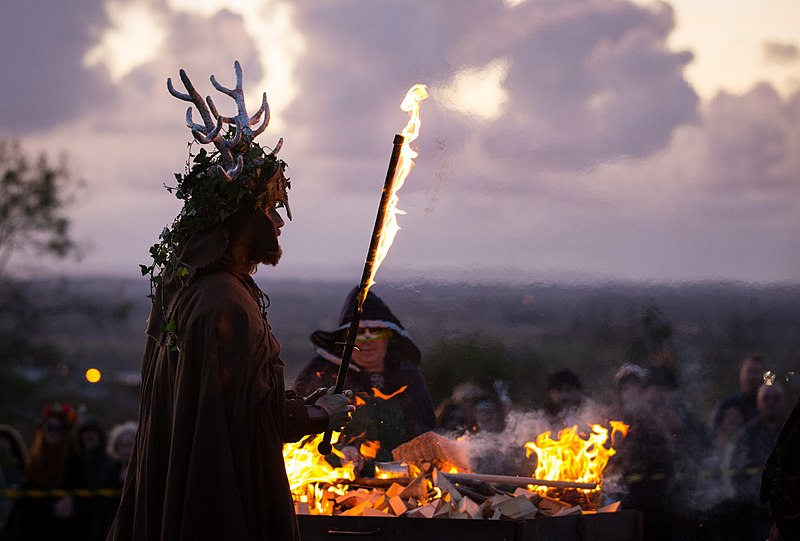
Embracing the Dark and the Light
In pagan and Neopagan beliefs, Samhain encapsulates the idea of embracing both the light and the dark aspects of life. It’s a time to acknowledge that death is a natural part of the cycle and that within darkness lies the potential for rebirth and renewal. This duality is mirrored in many pagan rituals and celebrations throughout the year.
Samhain, in pagan and Neopagan traditions, is like the fulcrum of a cosmic balance, where the interplay of light and darkness takes center stage. It’s a moment to recognize the inherent duality of existence, where life and death, light and dark, meet in a timeless dance. As the leaves fall and the days grow shorter, we are reminded that death, far from being an end, is a vital part of the cycle of existence.
Embracing the dark aspects of life during Samhain isn’t about dwelling in morbidity but acknowledging the profound wisdom that lies within the shadows. Just as the earth rests in winter, awaiting the rebirth of spring, so do we find the potential for renewal in moments of darkness and introspection. It’s a reminder that even in the bleakest of times, there is the spark of hope and the promise of new beginnings.
This duality isn’t limited to Samhain alone; it permeates many pagan rituals and celebrations throughout the year. From the vernal equinox to the summer solstice, from Lammas to Yule, paganism embraces the ever-turning wheel of life, where each phase, whether light or dark, contributes to the tapestry of existence.
In essence, Samhain offers a profound lesson in accepting the totality of our experiences, acknowledging that both light and dark are integral parts of the human journey. It invites us to celebrate the richness of life’s complexity and find solace in the knowledge that even in the darkest moments, there is the potential for illumination and growth.
Explore this link for a more extensive examination of the topic: Flow, Liminality, and Eudaimonia: Pagan Ritual Practice as a …
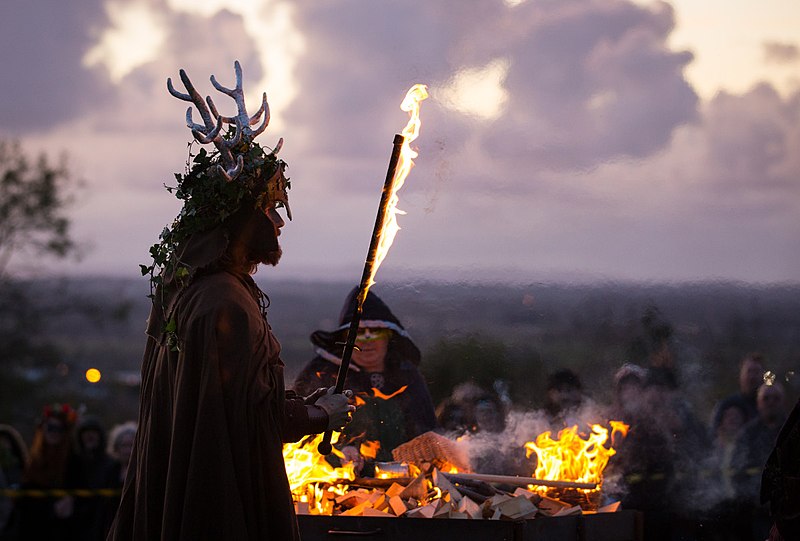
Contemporary Samhain Celebrations
Contemporary pagan and Neopagan traditions have adapted and evolved Samhain celebrations in various ways:
Contemporary pagan and Neopagan traditions have adapted and evolved Samhain celebrations in various ways, reflecting the diverse and ever-changing nature of spirituality in the modern world. Some practitioners incorporate elements of Samhain into broader seasonal festivals, creating a rich tapestry of rituals and traditions.
One common adaptation is the blending of Samhain with Halloween, combining ancient reverence for ancestors and the liminal with the more commercialized aspects of the holiday. This fusion allows for a broader appeal and greater engagement within mainstream culture while retaining the spiritual essence of Samhain.
Others focus on reviving and preserving specific Samhain customs, such as setting up ancestral altars, performing divination rituals or lighting sacred bonfires. These practices serve as a bridge between the past and the present, ensuring that the ancestral connections and wisdom of Samhain remain vibrant.
Moreover, contemporary interpretations of Samhain often emphasize ecological awareness and a deepening connection to the Earth. Many incorporate eco-friendly practices, like planting trees, organizing nature clean-up events or advocating for sustainable living, aligning with the idea that Samhain represents not only a time to honor the past but also a moment to reflect on our responsibility to the planet.
In these ways, contemporary pagan and Neopagan traditions keep the spirit of Samhain alive while responding to the evolving needs and values of the modern world, showcasing the enduring relevance of this ancient festival.
Don’t stop here; you can continue your exploration by following this link for more details: What Is Samhain? Origin of Halloween Rooted in Pagan Holiday …
Rituals and Ceremonies
Pagans and Neopagans continue to perform rituals and ceremonies that honor the spirits, celebrate the harvest and reflect on the cycles of life and death.
Pagans and Neopagans maintain a vibrant tapestry of rituals and ceremonies that resonate deeply with the natural world and the spiritual realms. These practices are not only rooted in ancient traditions but also adapt to the changing needs and beliefs of modern practitioners. Here’s an extended exploration of how these rituals and ceremonies continue to evolve and thrive:
**1. Celebrating Seasonal Changes:
One of the defining features of Pagan and Neopagan traditions is their connection to the cycles of nature. Throughout the year, practitioners mark the solstices, equinoxes and the points in between with rituals that honor the changing seasons. These ceremonies often involve specific symbols, chants and offerings that pay homage to the unique qualities of each season.
**2. Harvest Festivals:
Harvest festivals hold special significance in Paganism. These celebrations are a time of gratitude for the Earth’s bounty and an acknowledgment of the hard work put into cultivating and reaping the harvest. Practitioners often gather to share feasts, give thanks for the abundance of the land and make offerings to deities associated with fertility and agriculture.
**3. Connection with Ancestors:
Many Pagan and Neopagan traditions maintain a strong connection with ancestral spirits. Ancestor veneration rituals are conducted to honor and seek guidance from those who have come before. These ceremonies may involve creating ancestor altars, offering food and drink and sharing stories of family heritage.
**4. Deity Worship:
Various Pagan paths involve the worship of deities from pantheons around the world. Ceremonies dedicated to specific gods and goddesses often include invocations, prayers and offerings. These rituals foster a sense of personal connection with the divine and can be tailored to individual beliefs and practices.
**5. Circle Ceremonies:
Casting and working within a sacred circle is a common practice in many Pagan traditions. These circles serve as spaces where practitioners connect with the elements, call upon deities and perform spellwork or divination. The act of creating and entering the circle is a symbolic journey into the sacred.
**6. Sabbats and Esbats:
Paganism observes a variety of festivals known as sabbats and esbats. Sabbats mark the major seasonal holidays, while esbats are often monthly gatherings associated with the phases of the moon. These rituals offer opportunities for community bonding and the exploration of deeper spiritual themes.
**7. Eclectic and Personalized Practices:
The beauty of Paganism and Neopaganism lies in their diversity. Many practitioners adopt an eclectic approach, drawing inspiration from multiple traditions and tailoring their rituals to their personal beliefs. This fluidity allows for a rich tapestry of practices that reflect the evolving spiritual journeys of individuals.
**8. Environmental Stewardship:
Environmental consciousness is central to many Pagan and Neopagan belief systems. Rituals often incorporate elements of environmental stewardship, such as tree planting, litter cleanups or conservation efforts. This reflects a commitment to not only honoring the Earth but also actively protecting it.
**9. Adaptation and Innovation:
Pagan and Neopagan traditions are not static but continuously evolve to meet the needs of the modern world. New rituals and ceremonies are developed to address contemporary challenges and reflect changing beliefs while still maintaining a deep respect for ancestral wisdom.
**10. Community and Inclusivity:
Pagan and Neopagan communities emphasize inclusivity and acceptance of diverse beliefs. Rituals and ceremonies often welcome individuals of all backgrounds and orientations, fostering a sense of belonging and unity among practitioners.
In essence, Pagan and Neopagan rituals and ceremonies are a dynamic and ever-evolving expression of the human connection to the natural world and the divine. They serve as a source of spiritual nourishment, community and a way to maintain a deep reverence for the interconnectedness of all life. As these traditions continue to evolve, they remain a testament to the enduring human quest for meaning and connection in a complex and ever-changing world.
For additional details, consider exploring the related content available here Samhain – Traditions, Halloween, Wicca | HISTORY
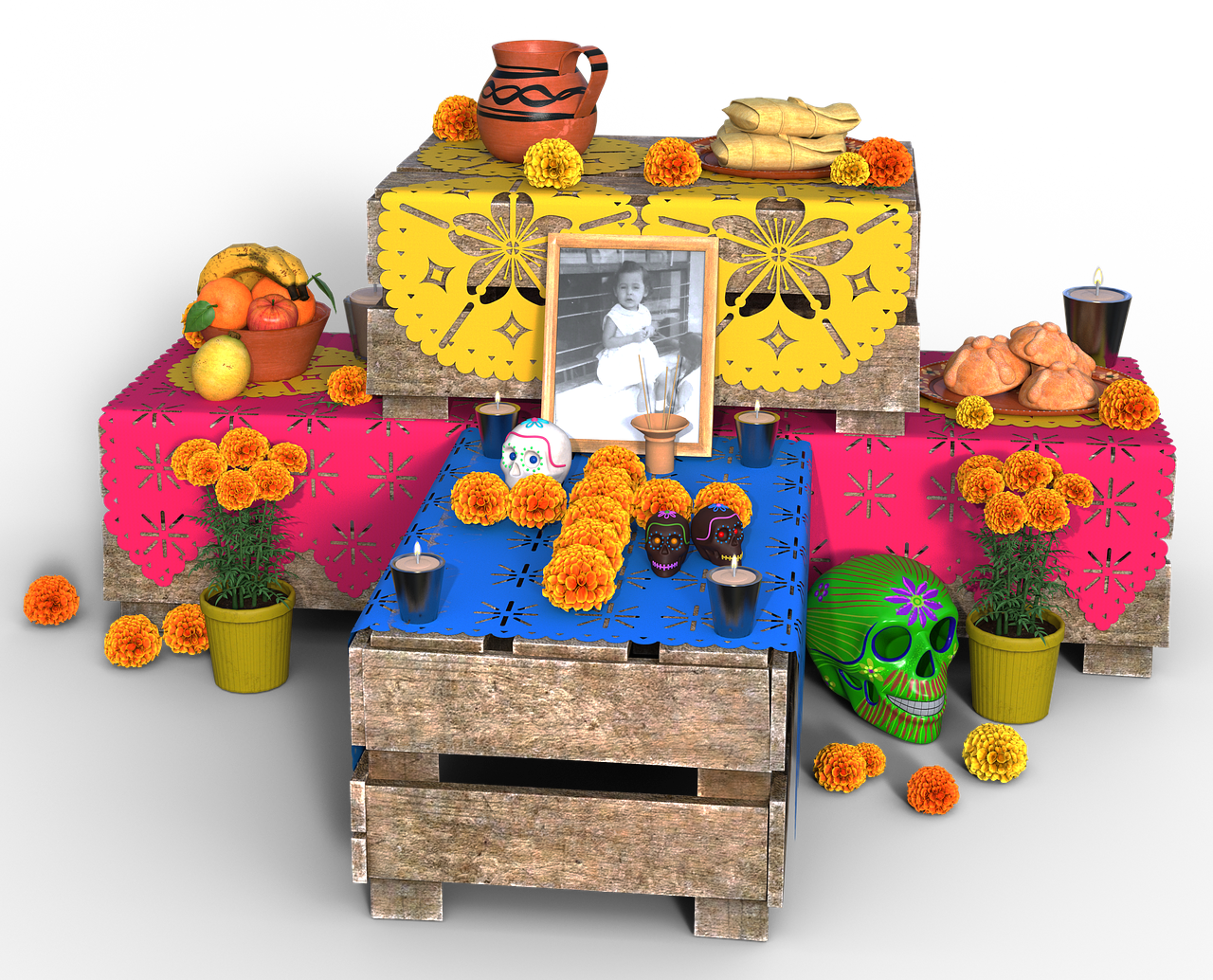
Community Gatherings
Many pagan communities come together during Samhain for communal celebrations, where they share stories, perform rites and offer support to one another.
Many pagan communities find profound meaning and connection in coming together during Samhain for communal celebrations. These gatherings serve as more than just social events; they are deeply spiritual and transformative experiences.
Within the sacred circle of Samhain, participants share stories that span generations. These tales often carry the weight of ancestral wisdom, preserving the narratives of those who came before. Through storytelling, the past is brought to life and the teachings of our forebears are passed down to new generations, ensuring that the traditions and values are not lost to time.
Rituals and rites during Samhain have a unique significance. They offer a chance to commune with the spirit world and honor those who have passed on. These ceremonies provide a sense of continuity, bridging the gap between the living and the deceased. It’s a time when the veil between worlds is believed to be at its thinnest, making it easier to connect with ancestors and seek guidance from the beyond.
The support and camaraderie within these gatherings are profound. Samhain is a time when the weight of mortality can feel heavy and the collective strength of a community can provide solace. Participants offer each other emotional support, a listening ear and a safe space to express grief or gratitude. It’s a reminder that, even in the face of life’s most profound mysteries, we are not alone.
In sum, Samhain celebrations within pagan communities are more than just gatherings; they are a tapestry of storytelling, spirituality and support. They weave the threads of the past and present into a meaningful and enduring connection that strengthens the bonds of community and honors the cyclical nature of life and death.
Don’t stop here; you can continue your exploration by following this link for more details: Jenny BUTLER Remembrance of the Ancestors in Contemporary …

Witchcraft and Magic
Samhain is considered a potent time for magic and spellwork in pagan and Neopagan traditions. Witches and practitioners often engage in divination, spellcasting and ancestor-focused rituals.
Samhain, a sacred and transformative time on the pagan and Neopagan calendar, is renowned for its potent magical energies and spiritual significance. This mystical season holds a special place in the hearts of witches, Wiccans and other practitioners who seek to harness its unique power. Here’s how Samhain serves as a pivotal moment for magic, spellwork and ritual practice:
Divination at Its Peak: Samhain is celebrated as a period when the veil between the physical and spiritual realms is at its thinnest. This thinning of the veil opens a direct channel for divination, making it an ideal time for practitioners to consult tarot cards, scrying mirrors, pendulums or other divinatory tools. Insights gained during Samhain divination can provide guidance and clarity for the year ahead, as well as facilitate communication with the spirit world.
Spellcasting for Transformation: Samhain’s energy is conducive to spellcasting aimed at personal transformation and growth. Witches and practitioners often craft spells to release old patterns, banish negativity and set intentions for the coming year. The symbolism of the season, with its emphasis on death and rebirth, aligns perfectly with the idea of shedding the old and embracing the new. Spells cast during Samhain are infused with the essence of renewal and regeneration.
Ancestor-Focused Rituals: Ancestors hold a central place in Samhain celebrations. Many practitioners use this time to honor and connect with their ancestors through rituals and offerings. These rituals not only show respect for those who came before but also strengthen the bond between the living and the deceased. Ancestor-focused spells and rituals are crafted to seek guidance, protection and blessings from the spirits of one’s lineage.
Protection and Warding: Samhain is also associated with protective magic. As the belief goes, with the veil thin, not only benevolent spirits can pass through but also malevolent ones. Witches often craft protective spells and wards to safeguard their homes and themselves during this vulnerable time. These spells may involve the use of herbs, crystals or incantations to create a shield against negative energies.
Harvest Magic: The harvest season is a significant aspect of Samhain and this theme can be woven into magical practices. Witches and practitioners may conduct rituals to bless the final harvest, express gratitude to the Earth and ensure a bountiful year ahead. This can involve offerings to nature spirits, deities of the harvest or the land itself.
Communal Celebrations: Samhain is often marked by communal celebrations, where practitioners come together to cast spells, perform rituals and share their magical knowledge. The collective energy and intention of a group can amplify the effectiveness of magical workings, creating a powerful and transformative experience.
In essence, Samhain is a time of profound magic and spiritual exploration for those who follow pagan and Neopagan traditions. It offers a unique opportunity to engage in divination, spellwork and rituals that align with the season’s themes of transformation, ancestral connection and the mysteries of life and death. As the wheel of the year turns, Samhain stands as a potent reminder of the magic that resides in the natural world and within ourselves.
Looking for more insights? You’ll find them right here in our extended coverage: Samhain – Traditions, Halloween, Wicca | HISTORY

Costumes and Symbols
The use of costumes, masks and symbolic decorations during Samhain harks back to the tradition of disguising oneself to ward off malevolent spirits. These practices have found their way into contemporary Halloween celebrations.
The use of costumes, masks and symbolic decorations during Samhain harks back to the ancient tradition of disguising oneself to ward off malevolent spirits. In those distant times, people believed that as the veil between the realms of the living and the dead grew thin, malevolent entities could easily cross over. To avoid their unwanted attention, individuals would don masks and costumes, imitating the spirits themselves or transforming into beings that these spirits would not recognize. The idea was to blend in with the otherworldly crowd and escape any harm that might come their way.
These practices served a dual purpose. While protection from malevolent spirits was paramount, disguises also had a more communal aspect. Samhain was a time when communities came together to celebrate the harvest’s end and the onset of winter. Disguises allowed individuals to temporarily shed their everyday identities and embrace a more collective, mystical experience. It was a time when the boundaries between social classes and roles blurred, as everyone, regardless of their station in life, could partake in the festivities.
Incorporating these ancient practices into contemporary Halloween celebrations adds a layer of tradition and mystique to the holiday. Today, we don costumes not just for protection but for the sheer joy of transformation and creativity. We embody the spirits of the season, whether they be friendly ghosts, fantastical creatures or beloved fictional characters. Halloween has become a time for self-expression and communal celebration, much like the ancient Samhain gatherings.
Moreover, the symbolic decorations that adorn our homes during Halloween—pumpkins, skeletons and jack-o’-lanterns—have their roots in Samhain’s rich symbolism. Pumpkins, for example, represent the harvest’s bounty and serve as lanterns to guide wayward spirits. Skeletons and skulls, on the other hand, symbolize the cycle of life, death and rebirth—an integral theme of both Samhain and Halloween.
In this way, the traditions of Samhain continue to resonate in the modern world. As we dress in costumes, carve pumpkins and adorn our homes, we pay homage to our ancestors’ wisdom and celebrate the enduring magic of the season. These customs serve as a bridge connecting us to the past while allowing us to revel in the joy, creativity and camaraderie of the present-day Halloween festivities.
Looking for more insights? You’ll find them right here in our extended coverage: What Is Samhain? Origin of Halloween Rooted in Pagan Holiday …
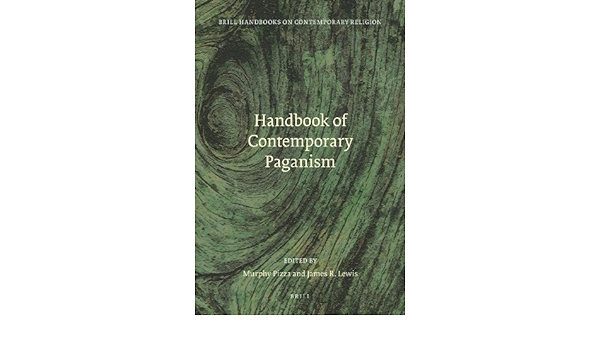
The Influence Endures
The enduring influence of Samhain on contemporary paganism and Neopagan traditions is a testament to the festival’s rich symbolism and profound spiritual significance. In a world where the pace of life often disconnects us from the cycles of nature and the wisdom of our ancestors, Samhain serves as a guiding light, reminding us to pause, reflect and connect with the timeless truths of the Earth and the cosmos. As contemporary pagans and Neopagans continue to draw inspiration from Samhain, they honor the ancient wisdom that has been passed down through the ages and find meaning in the eternal dance of life and death.
The enduring influence of Samhain on contemporary paganism and Neopagan traditions is a living testament to the festival’s enduring power and its profound resonance with our human experience. In a world where the frenetic pace of modern life often pulls us away from the natural rhythms of the Earth and the ancestral wisdom embedded in our souls, Samhain stands as a luminous beacon. It calls to us, inviting us to pause amidst the chaos, to reflect upon the ancient truths that have guided humanity for millennia and to reconnect with the sacred cycles that underpin our existence.
In Samhain, we find a timeless mirror reflecting the fundamental truths of the human journey. It reminds us that life is a continuum, a tapestry woven with threads of birth, growth, decline and rebirth. The festival’s symbolism of death and transformation serves as a potent reminder that, like the cycles of nature, we too are part of an eternal dance—a dance in which we shed our old selves to embrace the new, just as the leaves fall in autumn only to return in spring’s rejuvenation.
Contemporary pagans and Neopagans, drawing inspiration from Samhain, not only honor the ancient customs but also breathe new life into them. They carry forward the legacy of their ancestors, rekindling the sacred fires of tradition while infusing them with fresh perspectives and relevance. In doing so, they embrace a spiritual path that bridges the ancient and the modern, forging a connection with the timeless wisdom that has been passed down through the ages.
As the wheel of the year turns and Samhain approaches, these practitioners gather in circles, under moonlit skies or around cozy hearths, to pay homage to the energies that have guided humanity for countless generations. They honor their ancestors, whose spirits walk closely during this liminal time and they seek guidance from the depths of their own souls. It is a time to revere the interconnectedness of all life and to recognize that, in the grand tapestry of existence, every thread has purpose and meaning.
In this way, Samhain continues to serve as a touchstone, a reminder that our spiritual paths are not separate from the natural world but intricately woven into its fabric. It calls upon us to find solace and wisdom in the cycles of the seasons and to honor the enduring legacy of our ancestors. As contemporary pagans and Neopagans celebrate Samhain, they find themselves participants in the eternal symphony of life and death, a sacred dance that transcends time and space, reminding us all of our profound connection to the Earth and the cosmos.
For a comprehensive look at this subject, we invite you to read more on this dedicated page: Why paganism and witchcraft are making a comeback

More links
If you’d like to dive deeper into this subject, there’s more to discover on this page: Samhain – Traditions, Halloween, Wicca | HISTORY
